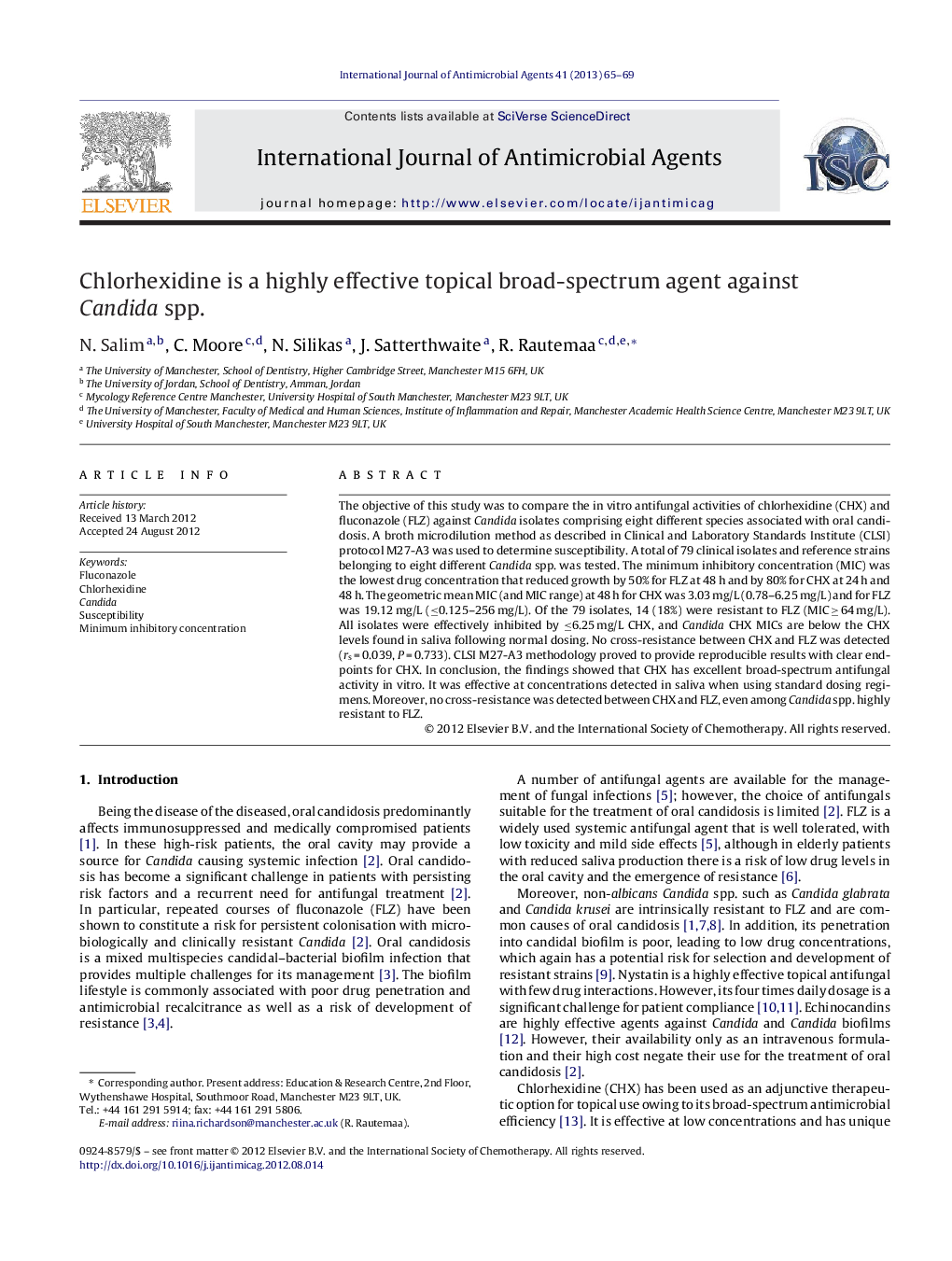| Article ID | Journal | Published Year | Pages | File Type |
|---|---|---|---|---|
| 6118072 | International Journal of Antimicrobial Agents | 2013 | 5 Pages |
The objective of this study was to compare the in vitro antifungal activities of chlorhexidine (CHX) and fluconazole (FLZ) against Candida isolates comprising eight different species associated with oral candidosis. A broth microdilution method as described in Clinical and Laboratory Standards Institute (CLSI) protocol M27-A3 was used to determine susceptibility. A total of 79 clinical isolates and reference strains belonging to eight different Candida spp. was tested. The minimum inhibitory concentration (MIC) was the lowest drug concentration that reduced growth by 50% for FLZ at 48 h and by 80% for CHX at 24 h and 48 h. The geometric mean MIC (and MIC range) at 48 h for CHX was 3.03 mg/L (0.78-6.25 mg/L) and for FLZ was 19.12 mg/L (â¤0.125-256 mg/L). Of the 79 isolates, 14 (18%) were resistant to FLZ (MIC â¥Â 64 mg/L). All isolates were effectively inhibited by â¤6.25 mg/L CHX, and Candida CHX MICs are below the CHX levels found in saliva following normal dosing. No cross-resistance between CHX and FLZ was detected (rs = 0.039, P = 0.733). CLSI M27-A3 methodology proved to provide reproducible results with clear endpoints for CHX. In conclusion, the findings showed that CHX has excellent broad-spectrum antifungal activity in vitro. It was effective at concentrations detected in saliva when using standard dosing regimens. Moreover, no cross-resistance was detected between CHX and FLZ, even among Candida spp. highly resistant to FLZ.
